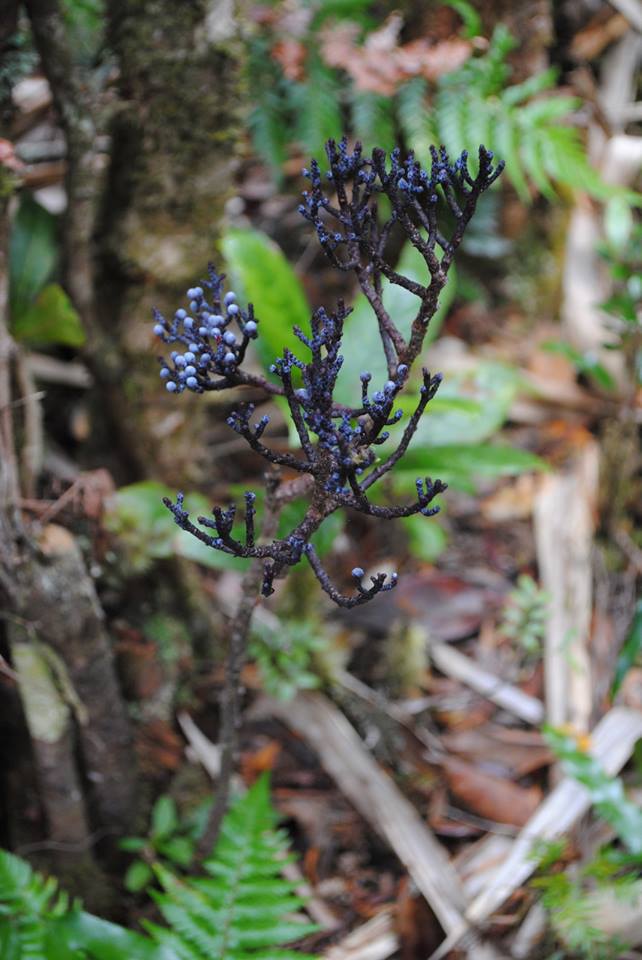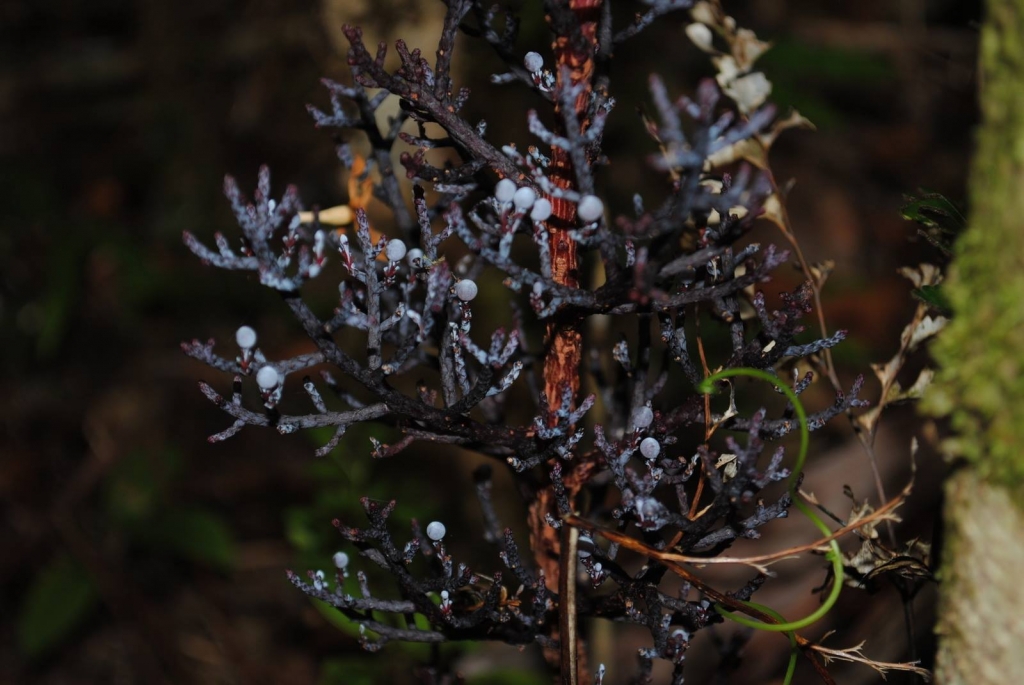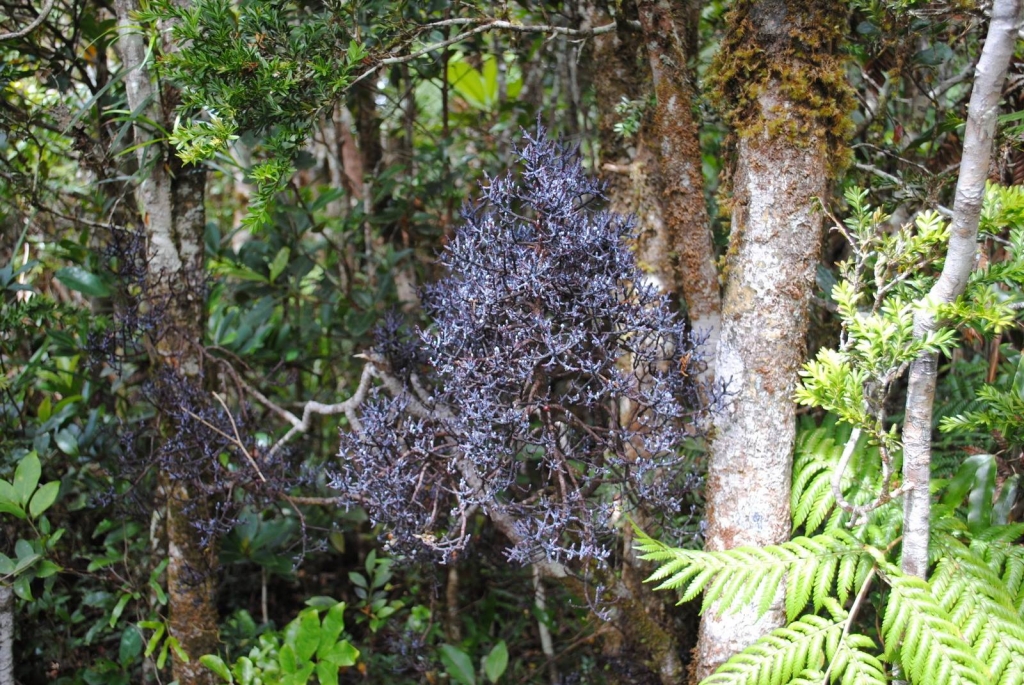Parasitaxus usta, first described in 1972 by (Viellard) David de Laubenfels, is commonly known as Corail. It is generally mentioned that this species is the only known parasitic gymnosperm. The species remarkably lacks roots and is always found attached to the roots of Falcatifolium taxoides (another member of the Podocarpaceae).
Description. Corail is a tropical shrub or small tree which grows to heights of 3 to 6 feet (1.0 - 1.8 m) tall. Its parasitism operates through a vesicular-arbuscular mycorrhiza, and the plant appears to be connected to its host through a root graft. The parasitic stem curves sharply so that the root zone is oriented upward. Most of the woody roots travel up the trunk of the host, probably for several feet; a few grow downward for several inches. The modified roots are imbedded in the bark between the cork cambium and the vascular cambium. General stimulation of the vascular cambium has occurred, producing a thickening in both wood and bark tissue. Despite possessing chloroplasts, it was found that the burgundy red shoots of Parasitaxus lack significant photosynthetic electron transport.
Distribution. This species is native to remote, densely forested areas of New Caledonia - Pouebo, Bleue River, type from Poila, found at elevations of 1.200 to 3,500 feet (400 - 1,100 m) above sea level.


